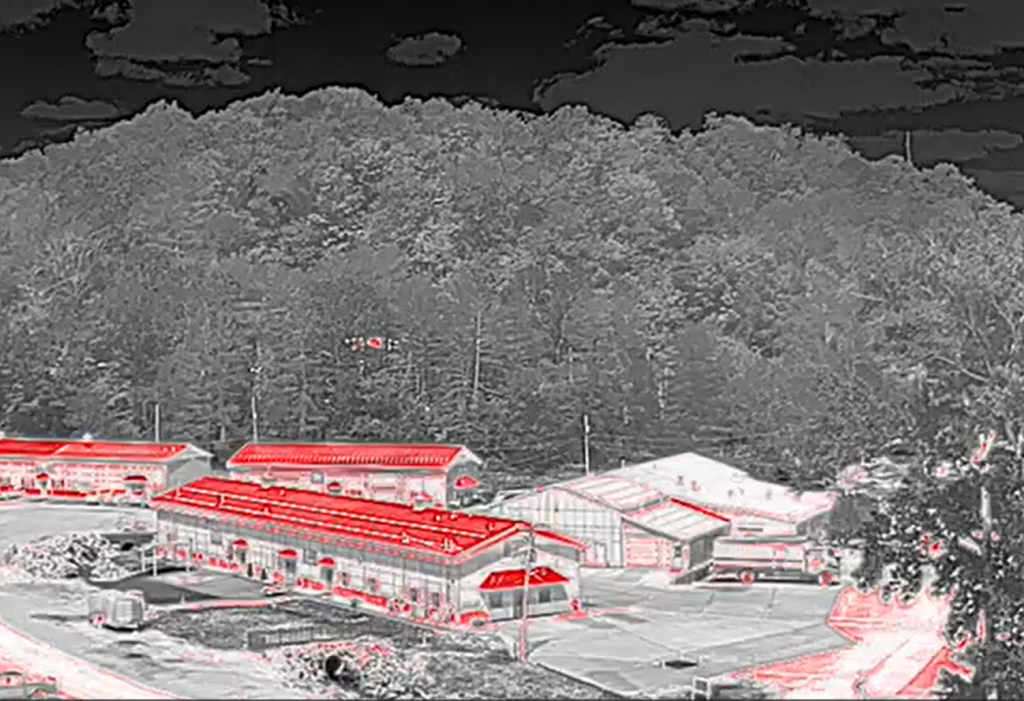Drones are a powerful tool for law enforcement in southeast Ohio that raise privacy concerns
By: Caleb McCleskey
Posted on:
MARIETTA, Ohio (WOUB) –– Hovering several hundred feet in the air, the four rotating propellers on the Washington County Sheriff’s Office newest drone could be heard from the ground.
Special Deputy Duane Brannan and his co-pilot focused the drone’s surveillance camera on the license plate of a pickup truck parked in a lot over two miles away across the Muskingum River.
You could see the license’s plate number.
This is just one of the features of the Matrice 300 RTK.
The Matrice weighs 8 pounds and has an almost two-foot wingspan. The drone has the ability to display color or black and white footage, heat signatures, infrared and show the temperatures of different surfaces.

The thought of adding sophisticated drones to the department started back in 2016. Davis Powers, special deputy for the sheriff’s office, said he only had a drone with limited capabilities in the office. One day, the sheriff asked Powers to take footage of a crime scene.
“That’s what gave the spark where our sheriff decided this could be a tool that could be valuable to the community and help save lives,” Powers said. “They invested in one drone and we did numerous operations with that drone, and then got another drone.”
The drones are now used for search and rescue operations, tracking fleeing suspects and as an extra pair of eyes when officers are serving search warrants.
For example, the sheriff’s office’s most recent operation was a missing person case in Vienna, West Virginia. The Vienna Police Department knew Washington County had a drone and requested help to find the missing person. Powers and his team went to Vienna to assist with the search.
After searching in the cold for two hours, they found the person in a very hilly area.
“The officers there … said if it wasn’t for the drone at that moment and for us looking for him, very good change he would’ve passed away and wouldn’t have been found at least a few months down the road,” Powers said. “It doesn’t always work that way. We try and we celebrate and we always learn from every operation that we do.”
With the new technology has come rules and policies for operating the drones.
“We abide by FAA rules,” Powers said. “Anytime you take a drone or an unmanned vehicle and put it into the air that is a controlled vehicle now. It falls under FAA or federal airspace rules and those rules are set in stone.”
Along with FAA rules, deputies have to follow their office’s own policies and not use drones for the wrong reasons, Brannan said. “We’re here for public protection and to serve the public,” he said.
Privacy advocates have concerns with use of the technology by law enforcement.
Gary Daniels, chief lobbyist for the American Civil Liberties Union of Ohio, said there are three major issues.
“Number one, what are they deployed for, what are they not deployed for, what are the rules and regulations,” Daniels said. “Who has access to the data and for what reasons — a very big concern with drones and all of this type of technology. Third, how long is this data kept for … . Our preferences on all this type of technology is if you don’t need it, get rid of it as soon as possible.”
Groups like the ACLU are trying to get laws passed in state legislatures to put limitations on law enforcement’s use of drones. For example, the Community Control Over Police Surveillance is a model bill by the ACLU that would restrict the deployment of surveillance equipment.
“You can have a department that has no rules or regulations, you can have a department that has fantastic rules and regulations with regard to privacy, and you can have departments that are somewhere in between,” Daniels said. “Regardless of where they fall on that scale, internal policies and regulations are not enough. We need laws to be able to protect people’s privacy.”

